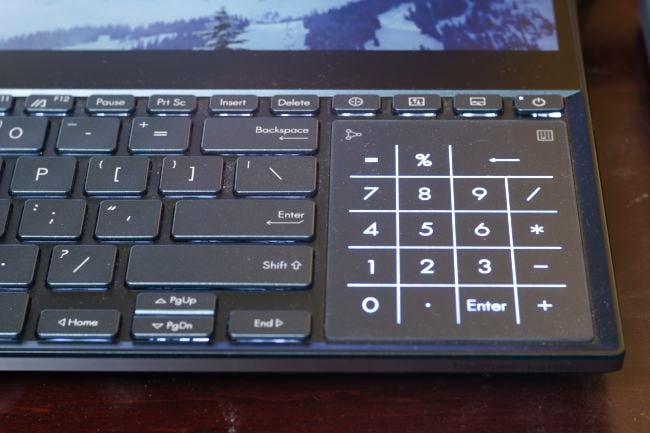
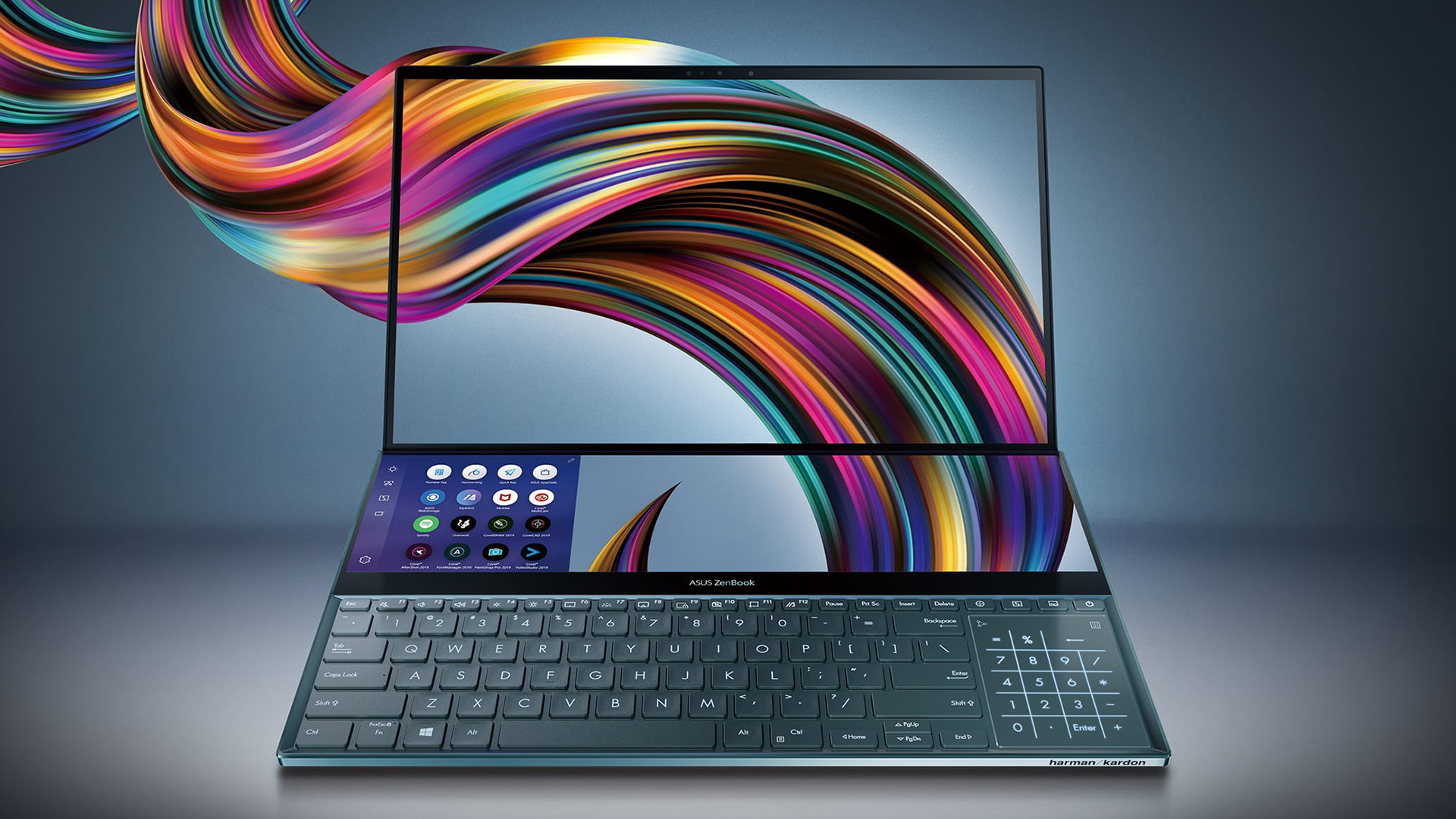
Review: We take a look at the Asus Zenbook Pro Duo, a powerhouse laptop with a few extra twists up its sleeve.
In recent years, Asus has been pushing the envelope on its laptop designs and not all of them have panned out. For example, its first attempt at a thin and light gaming laptop, the Zephyrus, suffered from fairly severe thermal throttling. However, Asus learned from that mistake and revamped the thermal design, leading to some big improvements in later versions.
At the same time, Asus has also been experimenting with some unusual features, like turning the trackpad on some of its ZenBook laptops into a secondary screen.
One of the first RTX Studio laptops in the Asus lineup, the ZenBook Pro Duo, shows its dual heritage with its clever cooling system combined with an unusual secondary monitor that goes a bit further than anyone else has attempted yet.
The model I purchased through XoticPC has an Intel Core i9-9980HK octa-core processor rated at 2.4 GHz, 32 GB of memory, a 1TB SSD, and an Nvidia GeForce RTX 2060 with 6GB of memory. Courtesy to XoticPC, the GPU is overlocked as well.
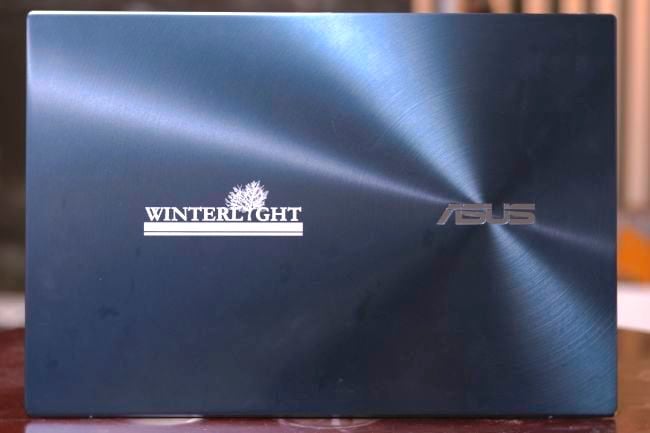
Asus' industrial design has come a long way; it's a beautiful machine with its deep blue, brushed aluminium finish. The Asus logo on the lid is off-centred, making room for custom logos, so I took advantage of XoticPC's optional custom laser etching to get my production company's logo etched onto the lid alongside the Asus logo.
The I/O is decent on this machine, though not great, with two USB Type A ports and one Thunderbolt 3 port, an HDMI port, a headphone jack and a dedicated power port. The large vents dominate the sides of the machine. The 240-watt power brick is moderately hefty.
Screen and keyboard
The ZenBook Pro Duo's primary screen is a beautiful, vibrant 4K UHD OLED. The attention-grabbing secondary screen immediately below it has a resolution of 3840x1100, an admittedly unusual aspect ratio but necessary to make room for the keyboard and touchpad. Without the matte finish, the secondary screen would probably show a lot of reflections from the primary screen when in use.
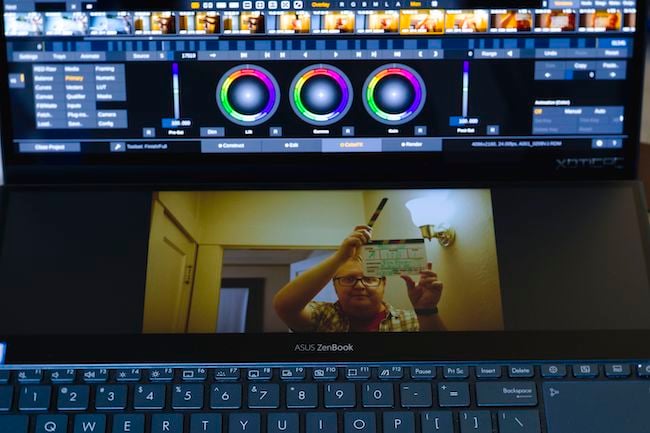
Both screens support touch and stylus input, and Asus includes a stylus with the laptop.
The keyboard is pleasant to type on, though being at the bottom of the chassis is a compromise. To alleviate the fact that there's no room for wrist rests in the chassis, Asus provides a separate wrist rest with the machine. It works well enough, but it's obviously best on a desk rather than on a lap. The trackpad is also a compromise, being squeezed into the right side of the chassis alongside the keyboard. It's also oddly shaped, being taller than usual. It has a useful trick, however: touch the icon at the top right and the trackpad becomes a numeric keypad. The numeric keypad might seem like a bit of a gimmick, but it's very useful. One of the most compelling uses is for printer light hotkeys in Resolve; 15” laptops with numeric keypads are pretty rare.
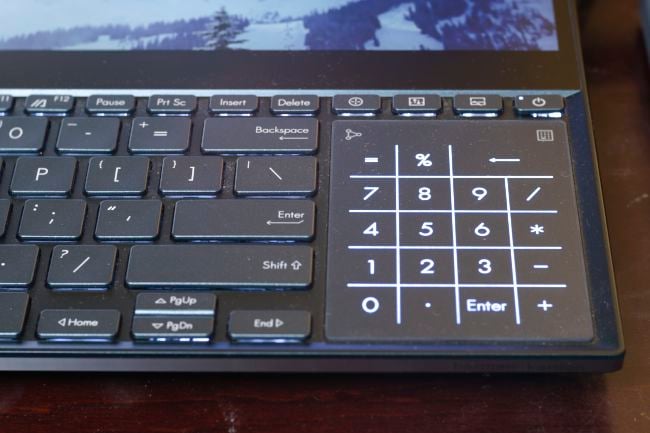
The topuchpad in numeric keypad mode
Asus borrowed the elevated hinge design from its Zephyrus as part of its cooling system. It gives the intake vents on the bottom freer airflow so that the fans in the machine can draw more air through the system's heat pipes while still being relatively quiet.
The downside of this design is that it makes the laptop relatively uncomfortable to use on a lap, both because there isn't enough room to use the keyboard and because the edge of the raised lid digs into your legs.
Battery life and performance
The battery life isn't great at a little over two hours. There's a button for turning off the secondary screen to save a bit of power, but the OLED is the more power-hungry of the two.
The ZenBook Pro Duo makes up for its mediocre battery life with its performance.
The cooling system does an excellent job. Scratch can play 8K footage at 4K resolution smoothly and it can render colour graded 8K footage at an average of 30 fps. It's had all eight cores and 16 threads running at full use keeping the clock speeds at 3.1 GHz for extended periods, showing no signs of thermal throttling.
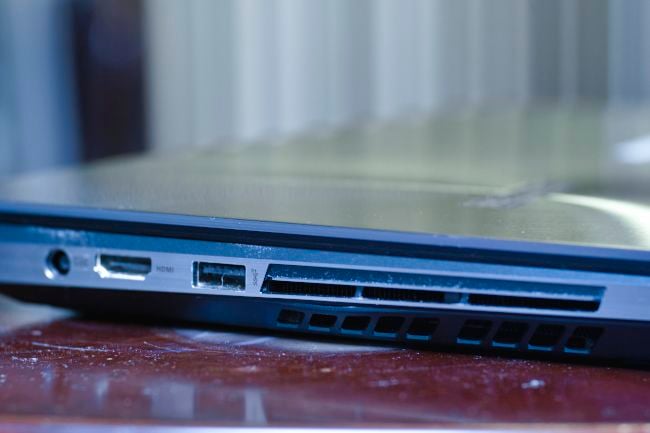
Under normal loads, the fans are whisper quiet, though under heavy loads they do become fairly loud. It emits an astonishing amount of heat. Even though the surface of the laptop stays cool, don't set your whiskey glass in front of one of the vents... unless you favour warm whiskey.
Despite all the heat this system generates when under such loads, the top surface remains impressively cool. Given that there's an LCD monitor on the top surface, this is probably a critical requirement, as cooking that LCD would ruin one of the laptop's headline features.
Conclusion
This isn't quite a perfect laptop yet, though. For one thing, it has only one Thunderbolt 3 port supplemented by two USB-A ports. I've had good success connecting my AJA I/O 4K+ to the TB3 port and connecting a hard drive to the second TB3 port on the I/O 4K+ to work on colour grades, but a second would enable also adding an external GPU with a dedicated TB3 port while still using the other port for a video I/O module and storage. Upgradable memory would round out an update quite nicely.
Despite being a fairly pricey machine at £2499, and not the slimmest workstation laptop out there, the ZenBook Pro Duo has been a great workhorse and I've been enjoying using it.
Tags: Technology


Comments